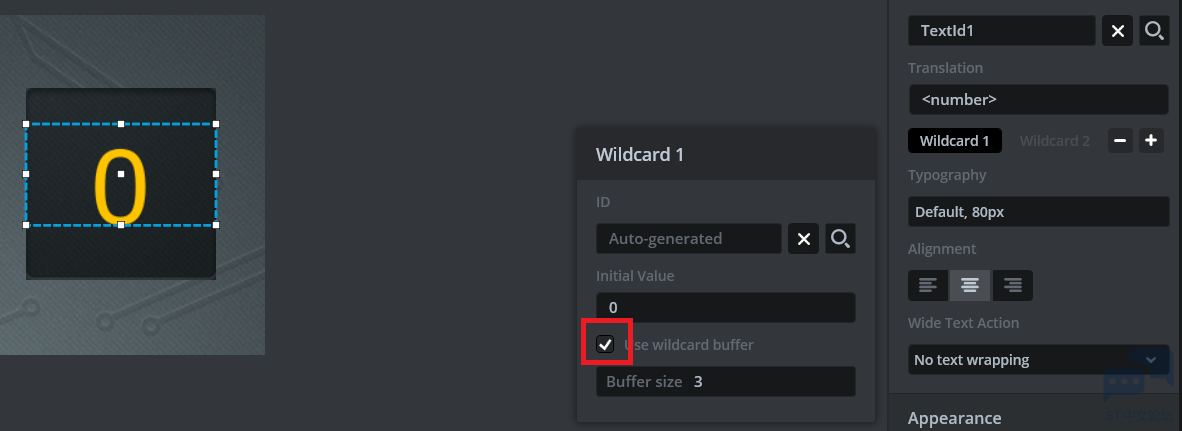一、生成代码
在TouchGFX Designer按F4可以生成代码

从代码目录中可以看出,生成的目录已经直接支持多个常用平台,如:IAR,Keil,stm32cubeide等。我用的是stm32cubeide。
为方便以下讲解先把需要的源码位置先标示出来

二、照葫芦画瓢,自建example
重建一个基于STM32H745I-DISCO空白工程,按照example,布局按键和显示,各控件的命名与原来一直。只做了些微调和增加一个复位按钮。

设置按键单击事件

生成代码后,会在MainViewBase.hpp中建一个MainViewBase类,类中定义了按键的虚函数(上图:Action中设置)。

在MainViewBase.cpp中设置了回调

具体实现:
首先在MainView.hpp中创建MainView类,继承自MainViewBase类

然后在MainView.cpp中编写各按键具体操作函数和刷新显示函数
void MainView::increaseValue()
{
count = (count++ > UPPER_LIMIT) ? UPPER_LIMIT : count;
updateGFXElements();
}
void MainView::decreaseValue()
{
count = (count-- <= LOWER_LIMIT) ? LOWER_LIMIT : count;
updateGFXElements();
}
void MainView::resetValue()
{
count = 0;
updateGFXElements();
}
void MainView::updateGFXElements()
{
//Counter text area GFX uptade.
Unicode::snprintf(countTxtBuffer, 3, "%d", count);
//Button GFX update and touchable.
if (count < UPPER_LIMIT)
{
buttonUp.setBitmaps(Bitmap(BITMAP_UP_BTN_ID), Bitmap(BITMAP_UP_BTN_PRESSED_ID));
buttonUp.setTouchable(true);
}
else
{
buttonUp.setBitmaps(Bitmap(BITMAP_UP_BTN_DISABLED_ID), Bitmap(BITMAP_UP_BTN_DISABLED_ID));
buttonUp.setTouchable(false);
}
if (count > LOWER_LIMIT)
{
buttonDown.setBitmaps(Bitmap(BITMAP_DOWN_BTN_ID), Bitmap(BITMAP_DOWN_BTN_PRESSED_ID));
buttonDown.setTouchable(true);
}
else
{
buttonDown.setBitmaps(Bitmap(BITMAP_DOWN_BTN_DISABLED_ID), Bitmap(BITMAP_DOWN_BTN_DISABLED_ID));
buttonDown.setTouchable(false);
}
// Invalidate all GFX area, which will result in it being redrawn in next tick.
countTxt.invalidate();
buttonUp.invalidate();
buttonDown.invalidate();
}
| 




 微信公众号
微信公众号
 手机版
手机版

在把钩打上,就会在MainViewBase.hpp的MainViewBase类内,建立一个buffer。
```
/*
* Wildcard Buffers
*/
static const uint16_t COUNTTXT_SIZE = 3;
touchgfx::Unicode::UnicodeChar countTxtBuffer[COUNTTXT_SIZE];
```
在MainView.cpp的刷新显示函数里,往这个buffer里填入count值就行了
```
void MainView::updateGFXElements()
{
//Counter text area GFX uptade.
Unicode::snprintf(countTxtBuffer, 3, "%d", count);
//Button GFX update and touchable.
```
三、效果